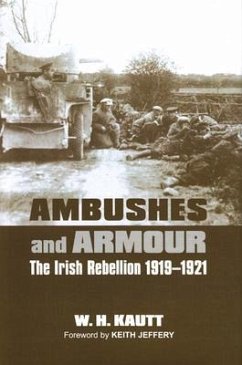The recent wars in Afghanistan and Iraq have focused public attention on ambushes, but this is not a new problem. The Irish Revolution (1916-1923) was a war of 'firsts': the first British counter-insurgency after World War I; the first mass use of motorized vehicles for counter-insurgency; the first use of extensive counter-mobility operations by insurgents; the first time a military force had to 'up-armor' its motor vehicles in response to the insurgent threat; the first time they had to deal with the negative effects of hanging steel plate on cars and trucks; the use of improvised explosive devices (IEDs) against motor vehicles - in both forms of pressure detonation and command (electric) detonation; the first time an army had to develop doctrine for the use of motor vehicles in a tactical or combat mode. Thus, the IRA exploited the axiom that military forces are at their most vulnerable when on the move. In this book, author W.H. Kautt looks at the development of ambush and counter-







